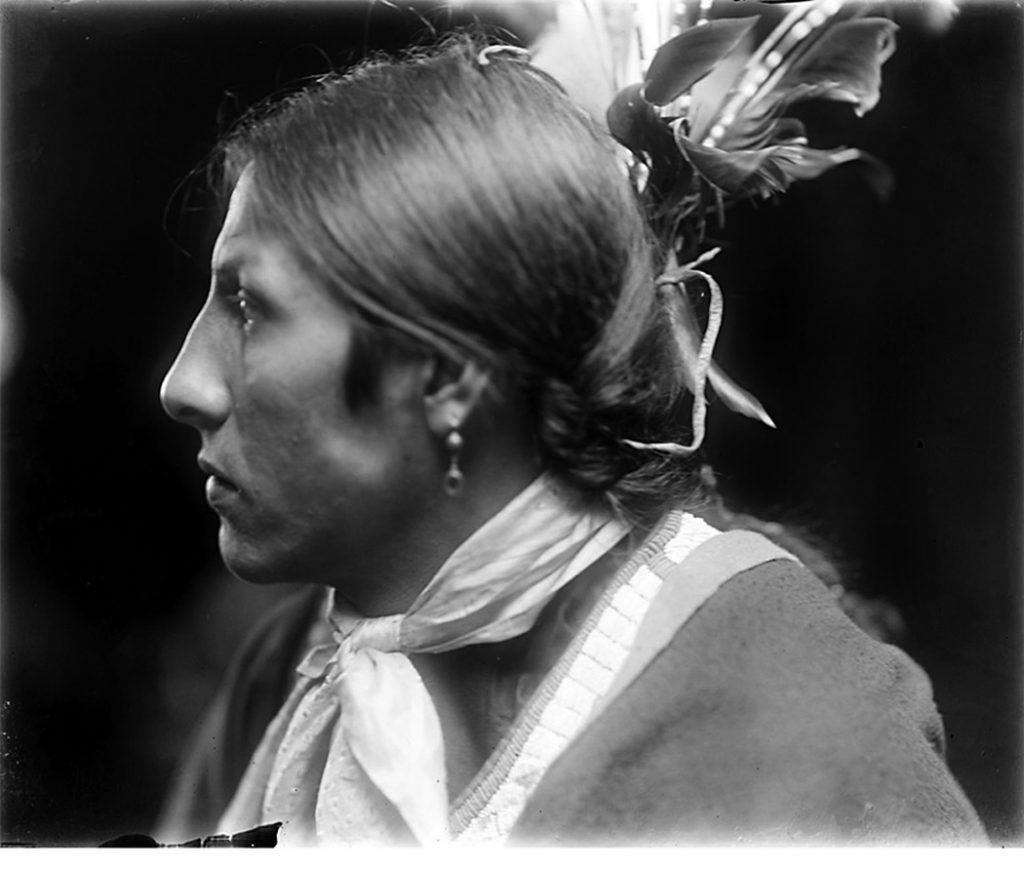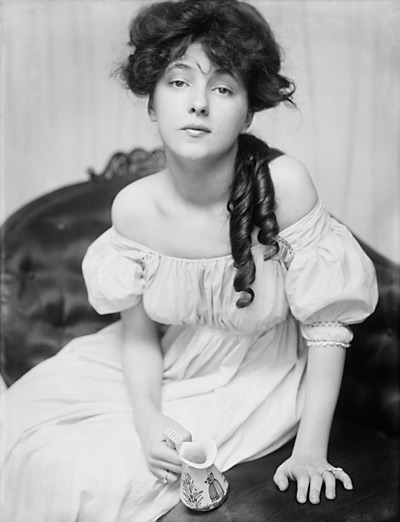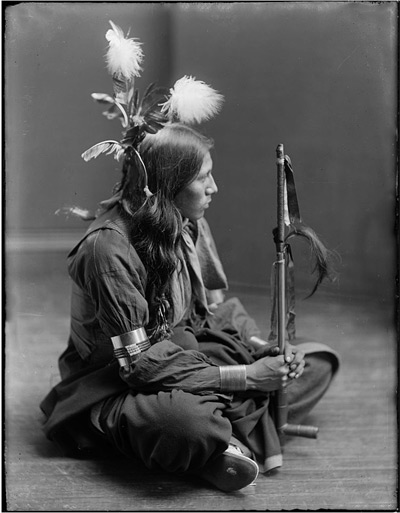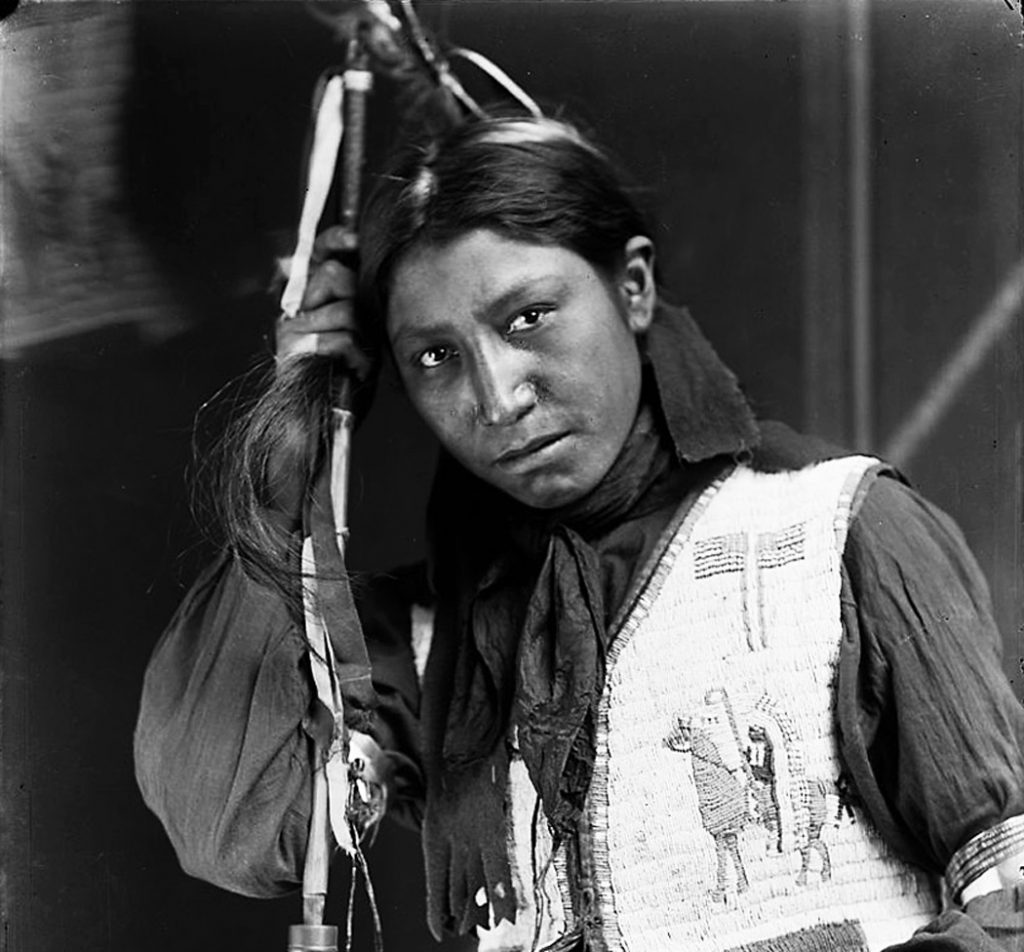
On the evening of June 25, 1906, during a performance at Madison Square Garden in New York, a millionaire named Harry Thaw drew a pistol and shot prominent architect Stanford White in the back, killing him instantly.
Thaw had recently married a chorus girl and actress named Evelyn Nesbit, who had been sedated and seduced by White when she was a teenager. At the time of the shooting, the public was well acquainted with Nesbit, who was a popular model and a “Gibson girl” celebrity.

The best-known portrait of Nesbit, made in 1903, is an iconic image taken by Iowa native Gertrude Käsebier (1852–1934), who is now widely considered to be one of the finest photographers of the Modernist era. Käsebier (née Gertrude Stanton) had a studio on Fifth Avenue at the time that she photographed Nesbit. Käsebier’s career had taken off late in the 1890s, when Alfred Stieglitz published and exhibited her photographs. She was, he asserted, “the leading artistic portrait photographer of the day.” In 1903, six of her works were included in the first issue of Stieglitz’s Camera Work, the celebrated journal of the Photo-Secessionist movement.
As an adult, Käsebier lived most of her life in the east, but her childhood had been more diverse. She was born in 1852 in Des Moines and spent her first eight years in what was then called Fort Des Moines. When her family moved westward to profit from providing supplies to prospectors, her father became the first mayor of Golden, Colorado.
It was while living in Iowa and Colorado that she became intrigued by Native Americans, specifically the Lakota Sioux. She later recalled that her childhood was a simpler, less treacherous time. The Indian women who lived nearby would ask her parents to borrow her, “take her to play with [their children], spend the day, and then send her back to her mother with her apron filled with buffalo meat.” It was a time when buffalo were plentiful, and her indigenous neighbors were largely benign.
Some 40 years later, those childhood memories came back to Käsebier as she looked out the window of her New York studio to see the colorful grand parade of Buffalo Bill’s Wild West. Leading that procession on horseback was the illustrious William F. Cody, who was escorting his famous troupe toward Madison Square Garden, where they would perform for the next several weeks. Käsebier was entranced, and soon after she drafted a letter to Cody, asking his permission to make portraits of the Native Americans in his show.
Cody granted her request, and she was then able to set up a studio session on Sunday, April 24, 1898. That morning, nine Sioux men and their chaparone arrived at her studio (one hour early) for a serving of tea and “hot frankfurters on unbuttered bread.” They were dressed in their finest traditional outfits, which they were permitted to wear by the U.S. government whenever they traveled with Cody. In contrast, when living on the reservation, they were expected to dress in “civilized” Euro-American clothes, for the purpose of socialization.

At the end of refreshments, Käsebier (described as “an old friend of their tribe”) spent three hours photographing her colorful guests. The group of nine included Chief Iron Tail, High Heron, Has-No-Horses, Samuel Lone Bear, Joseph Black Fox, Red Horn Bull, Shooting Pieces, Phillip Standing Soldier, and Kills Close to the Lodge. Twenty-two years had passed since the Battle of the Little Big Horn, and a mere seven years had elapsed since the Seventh Cavalry’s massacre of several hundred Lakota Sioux at Wounded Knee.
The portraits Käsebier made that day (now accessible online at the Library of Congress Prints &Photographs website) are both candid and dignified, the inverse of standardized studio views. In the words of Michelle Delaney (author of Buffalo Bill’s Wild West Warriors: A Photographic History by Gertrude Käsebier), Käsebier’s photographs are “simple, thoughtprovoking, modern portraits of individuals involved in a cultural transition.”

This was not an exploitative commercial affair. Käsebier’s portraits were not used for Wild West advertising, nor were they sold as gallery art. That initial session led to a long-term alliance between the photographer and her new-found friends. They soon had subsequent contacts, including exchanges of letters and notes, and additional portraiture sessions. She attended their performances whenever they were in New York, and in turn they gave her drawings they made during visits to her studio.
Before the first studio visit, someone cautioned Käsebier that if she invited them once, they would mistakenly consider it as “the equivalent of a declaration of friendship for life.” They would repeatedly visit her studio, invited or not. Käsebier replied, “Let them come . . . ” recalling her childhood on the plains. “I shall be glad to see them.”
As it happened, they did visit her frequently, whenever the Wild West performed in New York. But their visits were brief. As the New York Sun reported, “After staying about half an hour, the one who for the time being condescends to speak English inquires about the time. The hostesses then know that their callers are about to leave, and shortly after they depart with polite good-byes.”
Some of Käsebier’s portraits of the Lakota Sioux—with extracts from their letters to her and reprints of their drawings—were first shared with the public in an article in Everybody’s Magazine in January 1901. Through text, drawings, and photographs, the article was an eyewitness account of a benevolent early attempt to address a cultural rift that has never been resolved.
Roy R. Behrens is emeritus professor and distinguished scholar at the University of Northern Iowa. For more examples of his work, see ThePoetryOfSight.blogspot.com.
